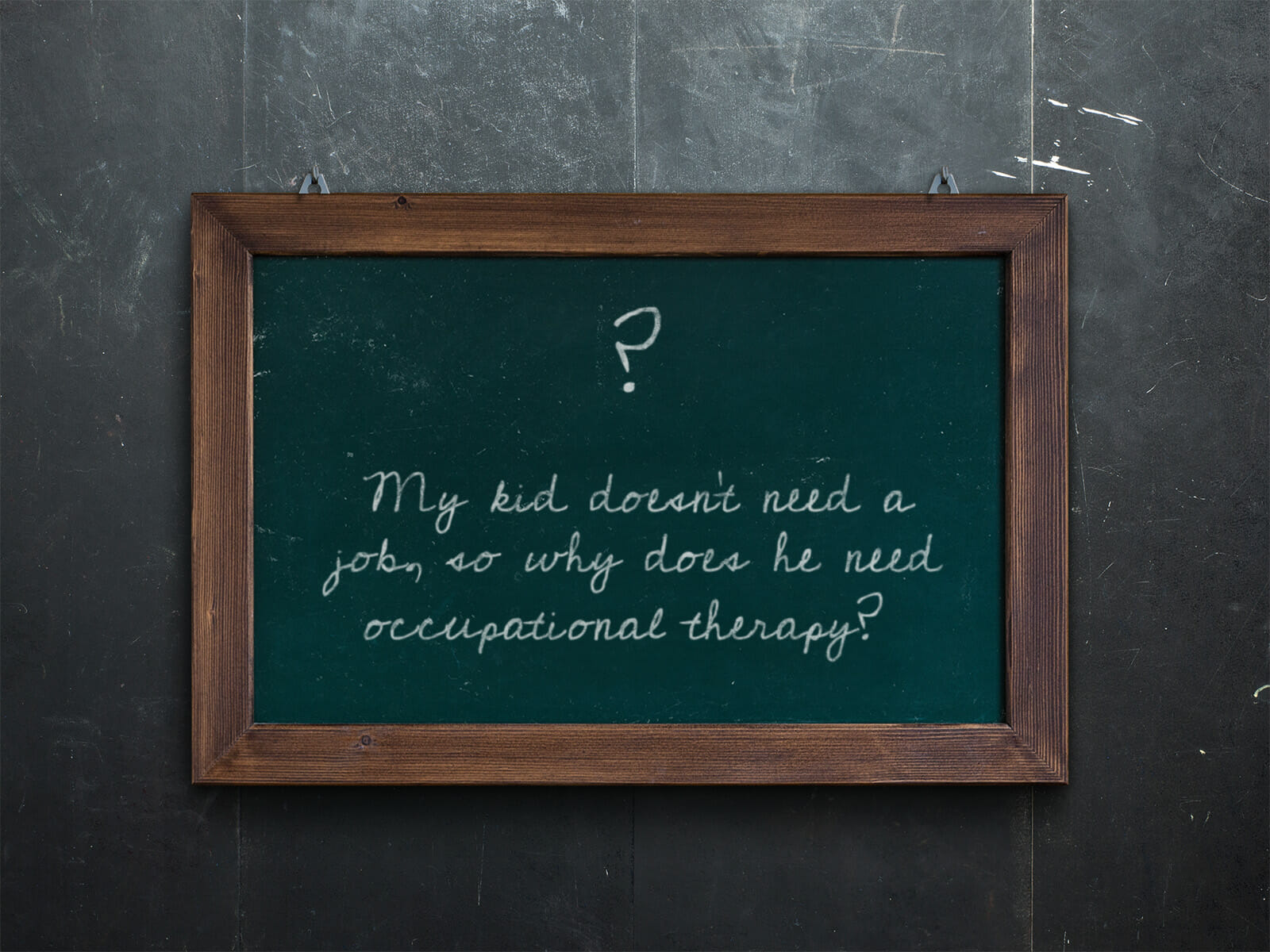Many people equate the word “occupation” with a 9-to-5 job, clocking in and out, putting food on the table and a roof over their family’s heads, so sometimes people are confused when we say that their child could benefit from occupational therapy! No matter where we are in the lifespan, from infancy to older adulthood, we are all engaging in an occupation.
Your occupation is what you need or want to do that is appropriate for your age or life stage. As a baby, your occupation was to eat, play, sleep, crawl, and walk. As a preschooler, your occupation might be feeding yourself, learning how to dress yourself, and engaging in imaginative play with your friends at school and coloring in your coloring book. As an older child, your occupation might be finishing your school tasks such as writing, typing, organizing your work and participating in soccer, band, or swim team. As a teenager, your occupation might be learning how to drive, hanging out with your friends, managing your money from your part-time job, juggling your school work and college applications, and trying to maintain a social life.
What if something prevents us from independently doing these things that we need or want to do?
Obstacles to our occupations could be due to difficulty with strength, coordination, dexterity, visual perception, sequencing, attention, sensory processing, or a host of other reasons – this is where occupational therapy comes in! Occupational therapists (OTs) help our patients gain the skills they need to develop age-appropriate occupations, giving them more independence and confidence. Our patients don’t always understand why we work on the things we work on, and when they are frustrated we are not always their favorite people! But when we share a happy dance because a patient just tied their shoes for the first time, or sat on the swing even though they were afraid, or we hear that a child is able to go to school and interact with his peers like never before, it’s so worth it.
OTs seek to provide opportunities for our patients to engage in meaningful occupations, whether by teaching them the skill, adapting the environment or the activity itself, or helping them develop the prerequisite skills (“building blocks”) they need to engage in the activity. When our patients meet a milestone, try a new activity, or meet a goal they’ve been working toward, we rejoice with them and their families because we know that all of the little things are really the big things. So while we may not be helping our kiddos find a job (although if that’s important to our patient and their family, we’re on it!), we are working with them to develop the skills they need that are important to them, right where they are in life.
Happy Occupational Therapy Month!
Meredith Hunt, MHSOT, OTR/L
Check out this post from last April to learn more about the history of occupational therapy, how OT is used to treat children, and some information about a little-known aspect of OT.








